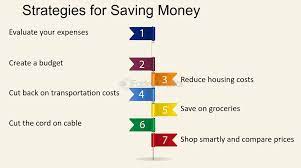Understanding Life Insurance Basics
Life insurance is a contract between an individual and an insurance company that provides financial protection to beneficiaries upon the insured person’s death. The primary purpose of life insurance is to ensure that loved ones are financially secure in the absence of the insured. This financial product helps cover various expenses, such as funeral costs, outstanding debts, and ongoing living expenses, which can alleviate the financial burden during a difficult time.
There are several types of life insurance available, each designed to meet different needs and preferences. The most common types include term life insurance and permanent life insurance. Term life insurance offers coverage for a specific period, usually ranging from 10 to 30 years. If the insured passes away during this term, the policy pays a death benefit to the beneficiaries. However, if the insured outlives the policy, there is no payout. This type of insurance is generally more affordable and is ideal for those seeking coverage for a limited duration, such as while raising children or paying off a mortgage.
Permanently life insurance, on the other hand, does not expire and provides lifelong coverage. This category includes whole life and universal life insurance policies. Whole life insurance offers a guaranteed premium and death benefit, along with a cash value component that grows over time. Universal life insurance allows for more flexibility in premium payments and the potential for higher cash value growth, depending on the chosen investment strategy. Understanding these fundamental concepts is crucial for individuals seeking affordable life insurance coverage, as it empowers them to evaluate their options and choose the best policy that fits their financial situation and long-term goals.
Assessing Your Coverage Needs
Determining the appropriate amount of life insurance coverage is a critical step for anyone considering a policy. The first aspect to evaluate is your current financial situation. Begin by assessing your total household income. This figure will serve as a foundational element in establishing how much coverage may be necessary to maintain your family’s standard of living in the event of your death.
Next, consider any outstanding debts. This includes mortgages, car loans, and credit card balances. It is essential to ensure that your life insurance policy covers these liabilities, so your dependents are not left burdened with the financial strain should something happen to you. A policy that accounts for these debts can provide peace of mind and stability for your beneficiaries.
Another significant factor is dependents. If you have children, a spouse, or anyone else who relies on your income, you must factor in their financial needs. Calculate future expenses such as education costs, daily living expenses, and additional costs that may arise, such as healthcare. This will give you a clearer picture of how much coverage is warranted to adequately secure their future.
Moreover, consider your existing assets, including savings, investments, and any other insurance products you may have. These could potentially offset the amount of life insurance you need. By evaluating these components holistically, you can tailor your policy effectively to meet your unique circumstances.
Finally, periodically reassess your coverage needs as life evolves. Changes in income, dependents, or overall financial status can dictate a need for adjustments in your life insurance strategy to ensure it continues to align with your goals and responsibilities.
Comparing Quotes from Multiple Insurers
When it comes to securing affordable life insurance coverage, one of the most effective strategies is to compare quotes from various insurers. This process not only allows you to understand the pricing landscape but also provides insight into the different policy features offered by each company. Life insurance premiums can significantly vary, thus obtaining multiple quotes ensures that you can find the best rate that meets your financial needs.
To begin the comparison process, start by identifying several life insurance providers. This can be done through online research or by seeking recommendations from trusted sources. Many insurance websites offer comparison tools that allow prospective buyers to input their information and receive quotes from different companies simultaneously. Be sure to provide accurate details about your health, lifestyle, and coverage needs, as these factors greatly influence the quotes provided.
Once you have gathered a selection of quotes, it is essential to analyze them comprehensively. Look beyond the premium costs; consider the policy’s coverage options, exclusions, and additional features, such as riders that may enhance your policy. Understanding the financial stability of each insurer is also crucial. You can check ratings from independent agencies which assess the ability of the insurer to pay claims. This will give you a clearer picture of whether the insurer is reliable and capable of supporting you when needed.
After careful evaluation, it may be advantageous to contact the insurers directly. This presents an opportunity to ask questions about their policies and possibly negotiate rates or ask for discounts. By being informed and proactive, you can secure a life insurance policy that not only fits your budget but also provides the necessary coverage for your future peace of mind.
Examining Policy Types for Cost-Effectiveness
When considering life insurance, understanding the different types of policies available is essential in determining which offers the best cost-effectiveness. Broadly, life insurance can be categorized into two primary types: term life insurance and whole life insurance. Each has distinct characteristics that influence both the premium costs and overall long-term value.
Term life insurance provides coverage for a specified period, typically ranging from 10 to 30 years. Its primary appeal lies in its affordability; premiums for term policies are generally lower than those for whole life insurance. This is mainly because term policies pay a death benefit only if the insured person passes away during the term of coverage, resulting in lower risk and, consequently, lower costs. For individuals seeking temporary coverage or those who want a safety net for family expenses, term life insurance can be a straightforward and budget-friendly option.
Whole life insurance, on the other hand, is designed to provide coverage for the entirety of the insured’s life, as long as premiums are paid. This policy also accumulates cash value over time, representing a form of savings that can be accessed during the policyholder’s lifetime through loans or withdrawals. However, these policies typically come with higher premiums due to the lifelong coverage and cash value component. As such, they may not be the most cost-effective choice for everyone, particularly younger policyholders who may prioritize lower initial costs over long-term benefits.
Ultimately, when evaluating cost-effectiveness, it’s crucial to assess personal financial goals, family needs, and potential future expenses. Understanding the differences between term and whole life insurance can help individuals select a policy that aligns best with their financial situation and provides the most suitable balance between coverage and affordability.
Tips for Improving Your Health and Lifestyle
Maintaining a healthy lifestyle is not only beneficial for your well-being but can also lead to significant savings on life insurance premiums. Insurance companies typically assess your health status when determining the cost of your policy. Therefore, adopting certain habits can noticeably lower your premiums and enhance your overall quality of life.
Firstly, focusing on a balanced diet is essential. Consuming a variety of fruits, vegetables, whole grains, and lean proteins can help you maintain a healthy weight and reduce the risk of chronic diseases such as diabetes, hypertension, and heart disease. A nutritious diet not only supports your general health but can also positively infl



